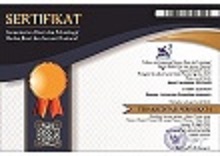POLA PERGESERAN FUNGSI HUNIAN PADA BANGUNAN RUMAH TOKO kasus: transformasi bangunan di kawasan Pasar Baru-Bandung
Abstract
Abstract: Shop house is one of the building type in the city centre. This type emerged because of the additional trade activity. Both activities, household and trading, harmonically live side by side for a quiet long time. Problems emerged when the tradeing activity became more dominant and demands more space while the lot was limited. This condition tends to drive function and the physical of the building to transform. Nowadays its difficult to recognize the genuine form of a shop house, it has transform into a new shape that don’t reflect the existence of a recidence function. At night, the city centre become quiet and dark, little or no existence of life, complete opposite with the daytime. By observation and typo-morfology approach this research will investigate the transformation on shop houses. Are the shop houses still occupied? Will the building transformation shift or even eliminate the occupancy function of the shop houses? The mass transformation on this area is feared to change the city centre into a busy trade area but no life at nights. The city centre as one of the most expencieve area is only properly to be used maximally both daytime and nightime, so the interference of the Local Government is expected to arrange the rules of changes. Transformation that occour is expected not to change the mixed area function: trade and residence, comfortable and worthy to be used day and night.
Keywords: shop house, building transformation, liveable area
Abstrak: Rumah-toko adalah salah satu tipe bangunan hunian di kawasan pusat kota. Tipe ini lahir karena adanya tambahan aktifitas berdagang. Ke dua aktifitas ini, berhuni dan berdagang, harmonis berdampingan untuk kurun waktu yang cukup lama. Permasalahan timbul ketika aktifitas berdagang menjadi lebih dominan dan menuntut tambahan ruang sedangkan lahan terbatas. Kondisi ini cenderung mendorong terjadinya transformasi fungsi maupun fisik bangunan. Saat ini rumah-toko lama sudah sulit dikenali bentuk aslinya, telah bertransformasi dan melahirkan bentuk baru yang tidak mencerminkan keberadaan fungsi hunian. Di malam hari kawasan pusat kota menjadi sepi dan gelap, tidak ada kehidupan, hal yang berbeda dengan kondisi sepanjang siang hari. Dengan melakukan observasi dan pendekatan tipo-morfologi studi ini akan meneliti bentuk transformasi pada bangunan rumah-toko. Masihkan rumah-toko dihuni? Apakah transformasi bangunan menggeser atau bahkan menghilangkan fungsi hunian dari bangunan rumah-toko? Maraknya transformasi yang terjadi pada kawasan ini dikhawatirkan akan menghilangkan fungsi hunian pada kawasan perdagangan di pusat kota. Pusat kota sebagai kawasan termahal selayaknya digunakan secara maksimal siang dan malam hari oleh karenanya diperlukan campur tangan Pemerintah Daerah dalam mengatur perubahan. Diharapkan transformasi yang terjadi tidak merubah fungsi kawasan perdagangan sebagai kawasan campuran; hunian dan perdagangan yang nyaman dan layak digunakan sepanjang pagi hingga malam hari.
Kata Kunci: rumah-toko, transformasi bangunan, livable areaFull Text:
PDFReferences
Alexander, C. (1987). A New Theory of Urban Design. New York: Oxford University Press.
Anthony, A. (1992). Poetics of Architecture: Theory of Design. New York: John Wiley & Sons.
Indira Rukmi, Wara; Muthmainah, Nyimas Atika Marwiyah; Maulidi, C. (2019). Conservation of Traditional Settlement Pattern in 3_4 Ulu Sub District Palembang City. DIMENSI (Journal of Architecture and Built Environment), 46. Retrieved from http://dimensi.petra.ac.id/index.php/ars/article/view/21828
Ismet Belgawan, H. (2001). Pasar Tanah Perkotaan Informal, Suatu Sketsa Pertanahan di Pinggiran Kota Metropolitas. Retrieved from http://www.urdi.org.
Kohl, D. G. (1984). Chinese Architecture in the Straits Settlements and Western Malaya : Temples, Kongsis and HousesNo Title (First Edit). Kuala Lumpur: Heinemann Asia.
Kunto, H. (1984). Wajah Bandoeng Tempo Doeloe (I). Bandung: PT Granesia.
Mandasari, Fenny; Nurini, N. (2013). ANALISIS KARAKTER KAMPUNG PECINAN DI KAWASAN PERDAGANGAN DAN JASA PEUNAYONG PUSAT KOTA BANDA ACEH. Ruang, Jurnal Perencanaan Wilayah Kota, Undip Semarang, 1(1). Retrieved from https://ejournal3.undip.ac.id/index.php/ruang/article/view/2811
Moneo, R. (1978). Oppositions, A Journal for Ideas and Criticism in Architecture. The MIT Press, Cambridge, Massachusetts, and London, England.
Rossi, A. (1982). The Architecture of the City, Opposition Books. London: The MIT Press, Cambridge, Massachusetts, and London, England.
Santi, S. (2011). Karakteristik Rumah Toko (Ruko) Kawasan Pecinan Kota Lama di Kota Kendari. Unity, Jurnal Arsitektur, 2(1), 40–47. Retrieved from http://ojs.uho.ac.id/index.php/unity/issue/view/101
Siregar, S. (1990). Bandung The Architecture of a City in Development, Urban analysis of a regional capital a contribution to the present debate on Indonesian Urbanity and Architectural Identity, Volume I & II. Katholieke Universiteit Leuven Belgie.
Soewarno, N.-. (2013). Kawasan Pusat Kota Sebagai Lingkungan Hunian: Transformasi Arsitektur Hunian Di Kawasan Pusat Kota Kasus: Kawasan Pasar Baru-Bandung. Parahyangan Katolik University.
Soewarno, N.-, Hidjaz, T., & Virdianti, E. (2018). Building Transformation in Bandung City Centre: Expansion of Land Lot at Pasar Baru Area. (September), 1015–1025. https://doi.org/10.4995/isuf2017.2017.6174
Soewarno, N. (2014). Transformations of Vernacular Buildings : Chinatown in Bandung City , Indonesia. ISVS E-Journal, 3(1), 42–49.
Soewarno, N. (2020). Transformation of lots dimension to sustain the pattern of blocks at the city centre of Bandung. IOP Conference Series: Earth and Environmental Science 409 (1), 012041 Vol. , 2020, 409. Retrieved from https://iopscience.iop.org/article/10.1088/1755-1315/409/1/012041
Sudarwani, M. (2010). KARAKTER VISUAL KAWASAN PECINAN SEMARANG. Jurnal Universitas Pandanaran Semarang, 8(18). Retrieved from http://jurnal.unpand.ac.id/index.php/dinsain/article/view/62
Sugiri, K. (2012). JEJAK KOMUNITAS TIONGHOA DAN PERKEMBANGAN KOTA BANDUNG. Jurnal Sosioteknologi Institut Teknologi Bandung, 11(26). Retrieved from http://journals.itb.ac.id/index.php/sostek/article/view/1095
Tjiook, W. (2018). Pecinan as an inspiration The contribution of Chinese Indonesian architecture to an urban environment. Wacana, Jurnal Ilmu Pengetahuan Budaya, 18(2). Retrieved from http://wacana.ui.ac.id/index.php/wjhi/article/view/596/pdf_37
DOI: https://doi.org/10.17509/jaz.v3i2.25374
Refbacks
- There are currently no refbacks.
Copyright (c) 2020 Nurtati soewarno

This work is licensed under a Creative Commons Attribution-ShareAlike 4.0 International License.





